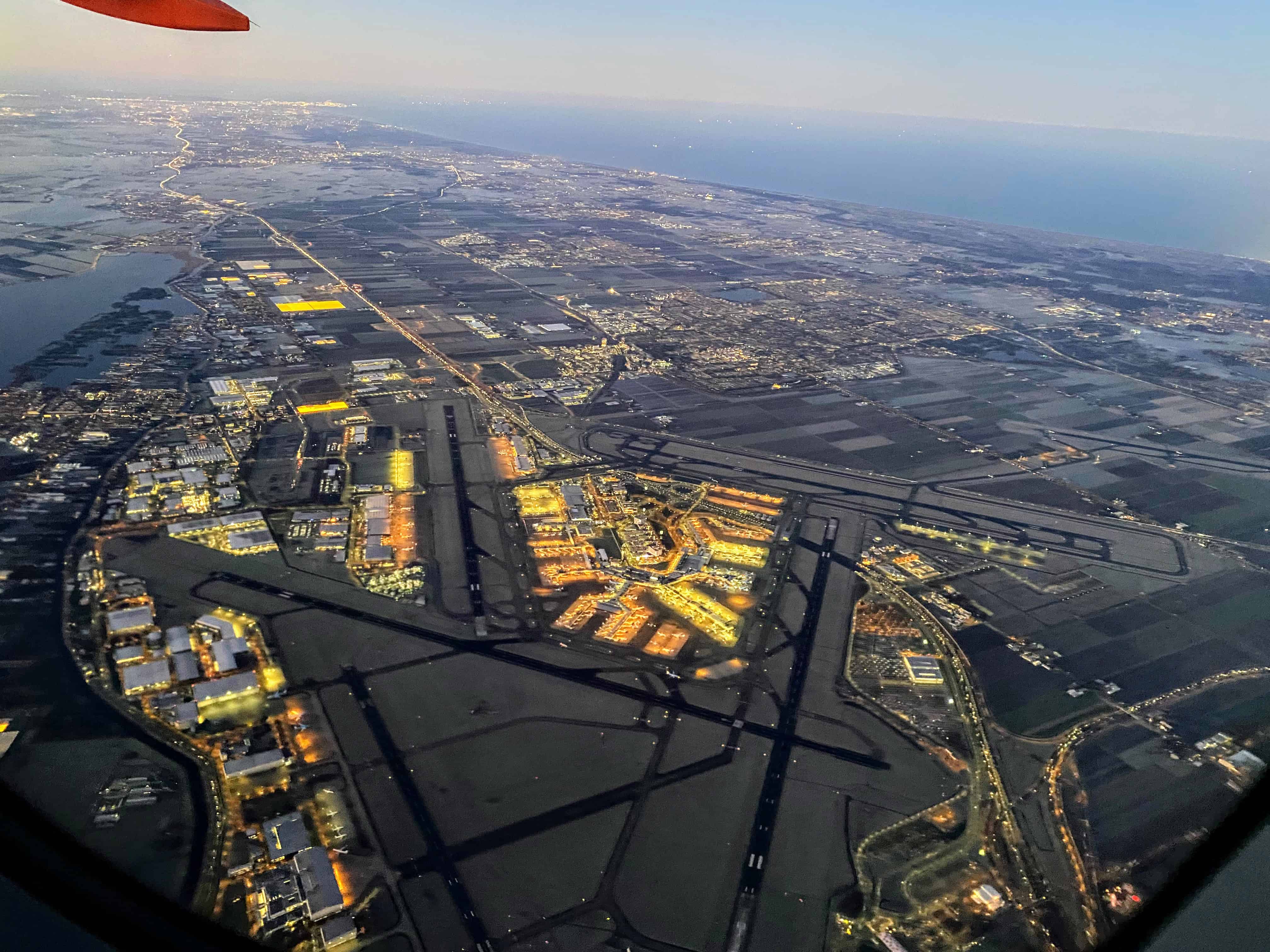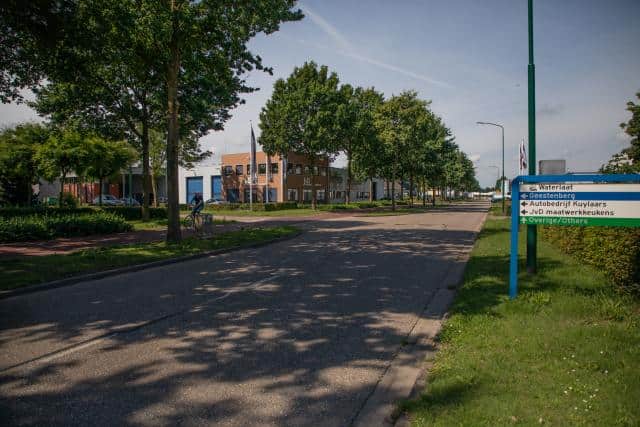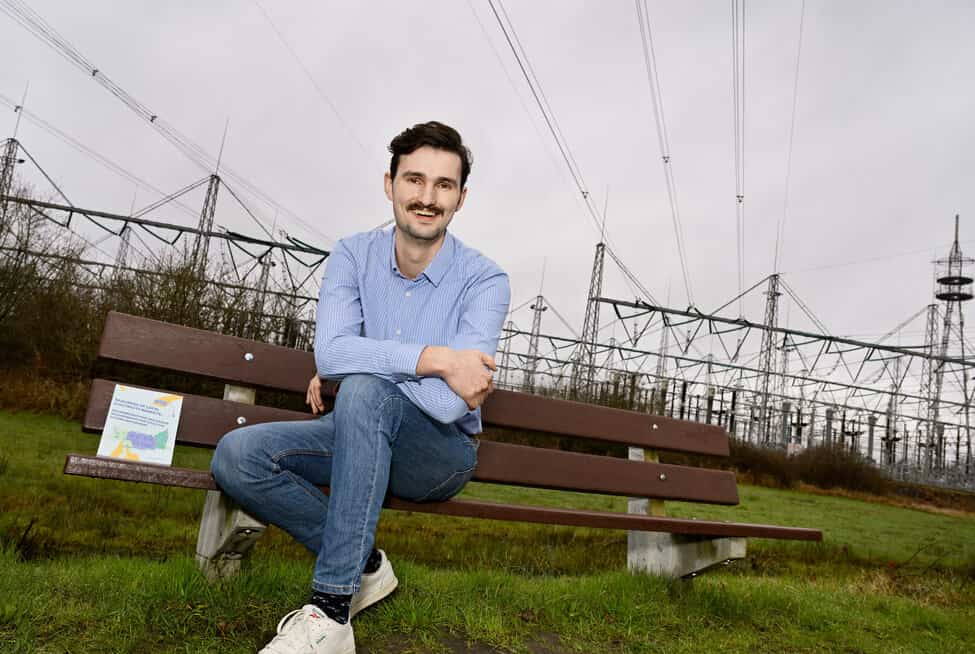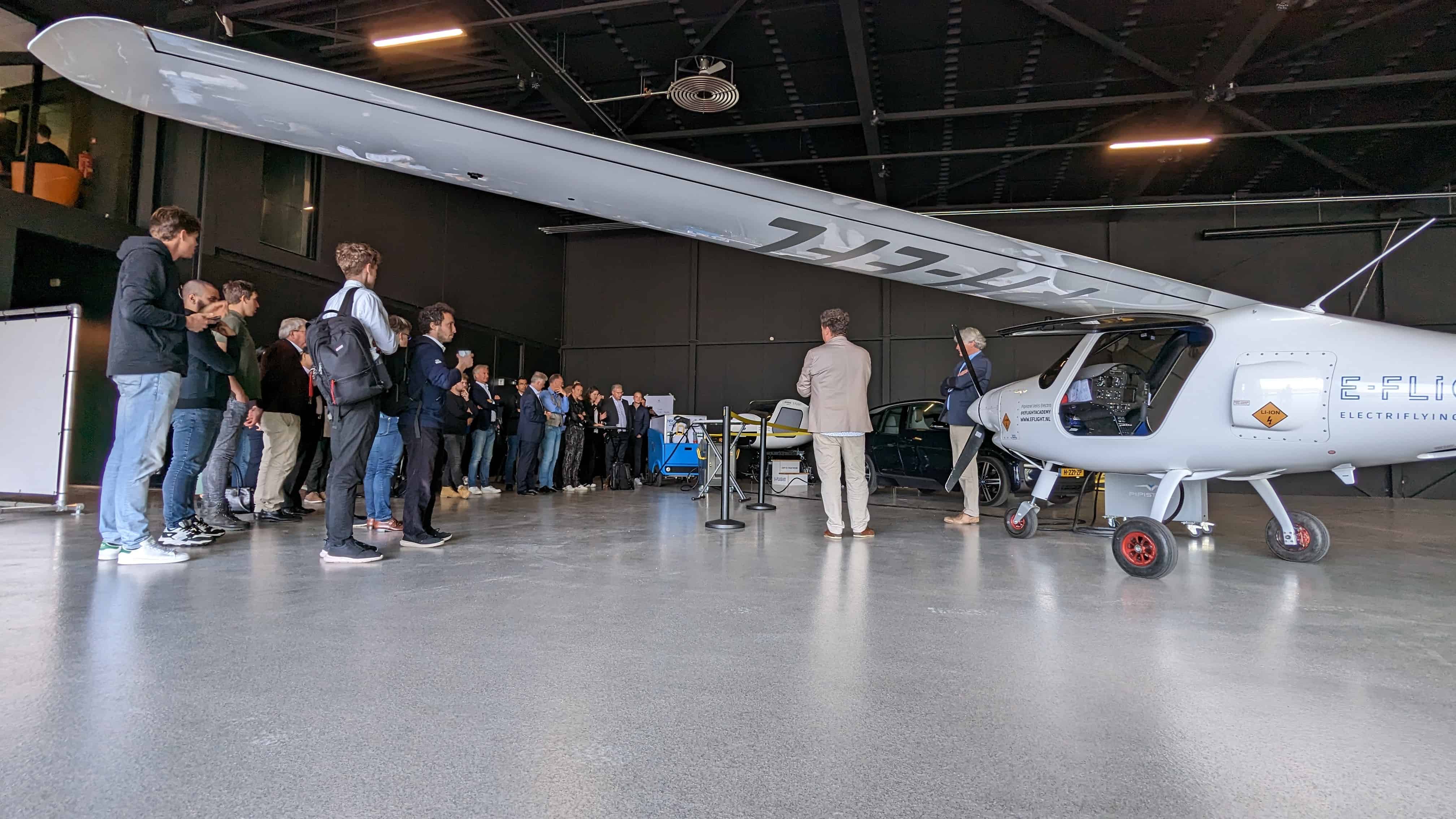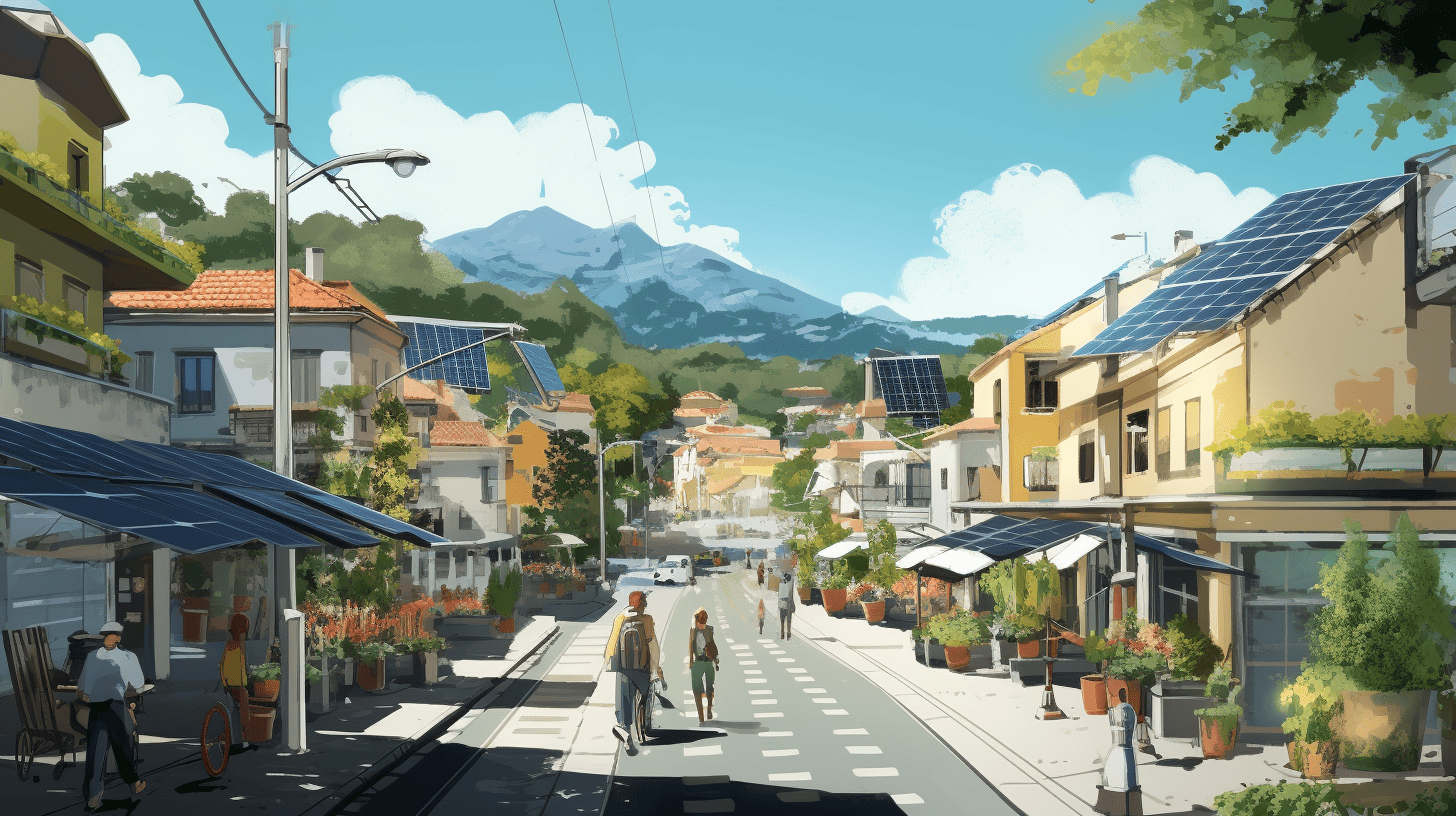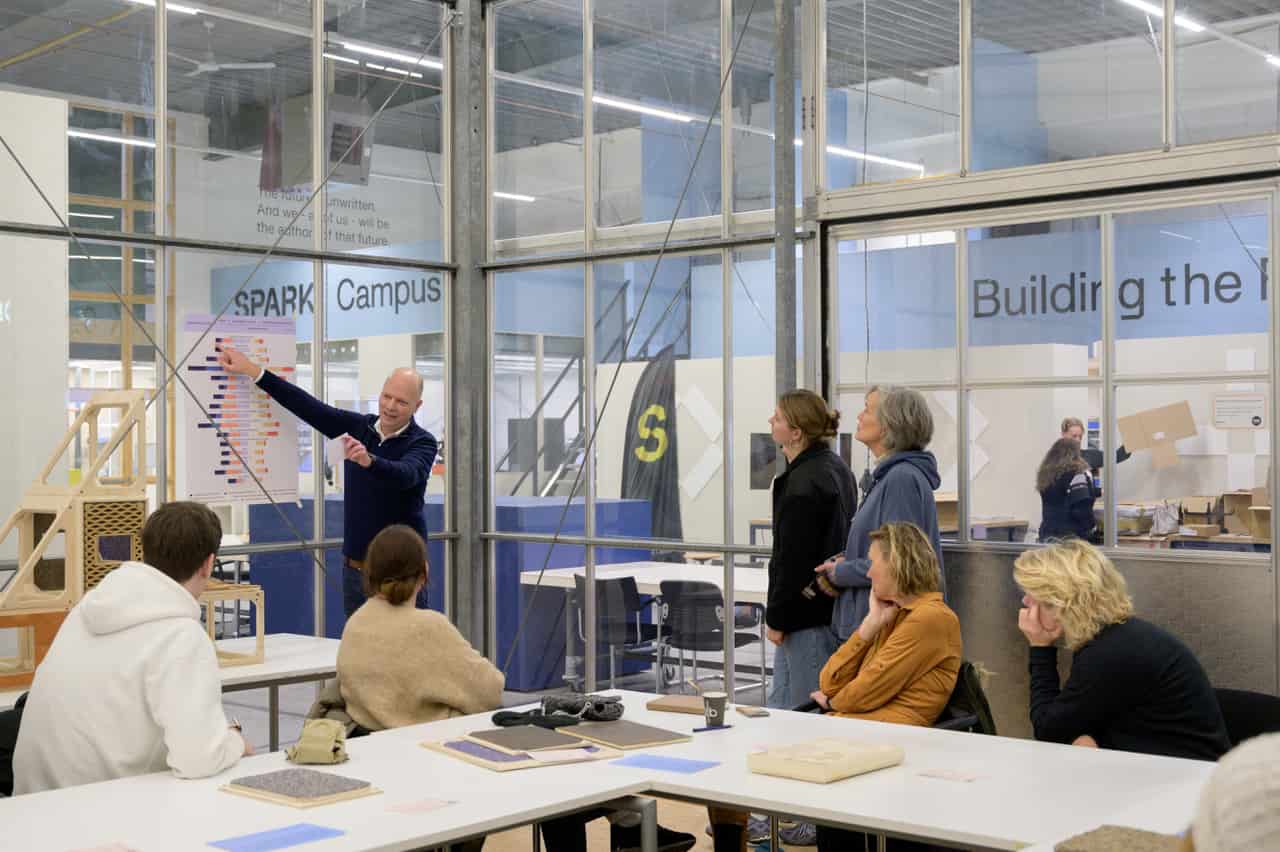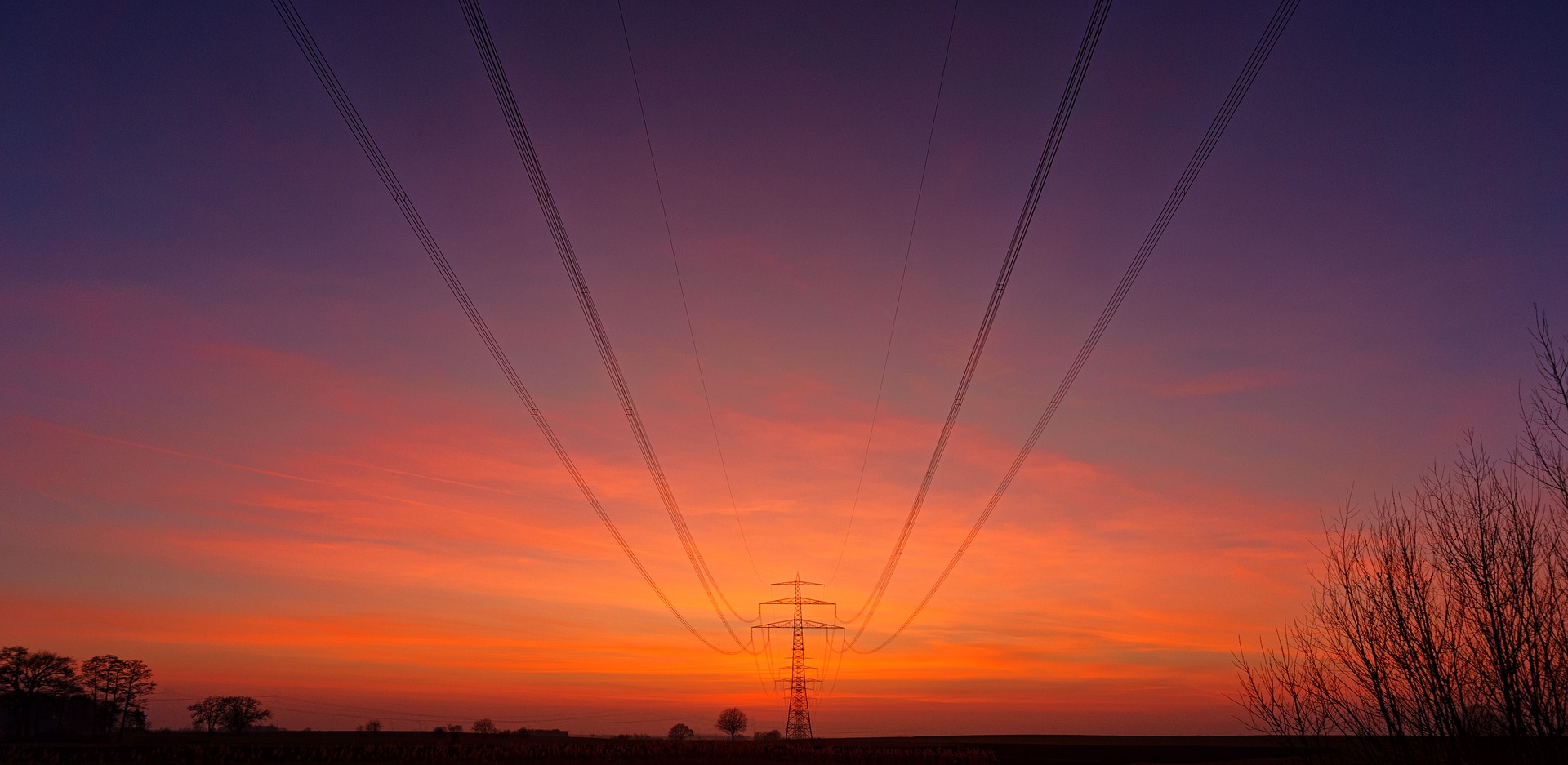
The demand for electricity is growing explosively thanks to the energy transition. The supply of sustainable electricity is growing rapidly as well. In many places in the Netherlands, there is not enough room on the grid to transport all that power. Increasingly more entrepreneurs are opting to become self-sufficient by generating their own energy. Like at Schiphol Airport, where Joulz is working with Intospace to build a virtual power grid. “It’s technical solutions like this that make it possible for us to meet the climate targets.”
At Schiphol Trade Park in Hoofddorp, it’s a constant stream of excavators and construction vehicles. Here, property developer Intospace and energy infrastructure specialist Joulz are building a distribution center that will supply its own energy. The 55,000-square-meter building will not be drawing power from the electricity grid. It will only have a connection to supply power back to the grid. And that is a necessity, because the annual energy production of the building, on which some 22,000 solar panels will be installed, is 7.6 megawatt hours. Which is more than the distribution center itself needs.
That the building will not have take-up capacity for the time being is a matter of necessity. “Property development is stalling due to grid congestion,” says Mike Sterkenburg, manager of infrastructure services at Joulz. “We’re getting more and more requests from property developers for areas that are very interesting economically and in terms of infrastructure, but are unable to connect to the grid.” The problems are particularly acute around Amsterdam and in the rest of North Holland. “A lot of data centers have been built here. These consume a lot of energy. No more additional connections can be made in these areas over the next five years.”
Overloaded
This is only set to increase in the coming years due to the large-scale electrification of our energy consumption. It is expected that by around 2030 that fifty percent of the electricity grid will be overloaded. “You’re going to have more and more electric transport and heat pumps. Plus, increasingly more solar and wind energy is being generated in rural areas and on the outskirts of cities. While in those areas the electricity grid is sparse precisely because the demand for power there was always low. These are the fundamental changes that are putting pressure on the electricity grid,” says Michiel van Schravendijk. In his role as business developer, van Schravendijk was at the forefront of Joulz’s virtual power grid solution. “The steps the grid operators have to take to keep up with this are so big, that it’s impossible to do in terms of money, knowledge and people.”
As a result, there is a run on grid connections. “It’s now a case of: First come, first served. And when it runs out, it runs out. In many cases, project developers find out about it too late,” says Van Schravendijk. “Then they have a piece of land in a fantastic spot but without any electricity.” And time to wait for the grid to be upgraded is not something these entrepreneurs have either. “E-commerce has taken off in recent years,” says Sterkenburg. “If they wait, they’ll lose their position in the market and hence their momentum.”
Virtual power grid
This is why Joulz, itself part of grid manager Stedin until 2019, came up with a solution: A virtual power grid, which means that the energy supply is regulated in such a way that connection to the electricity grid is not necessary at all. This is a complex operation – both technically and financially. But only Joulz notices that. “We make sure that things work as normal as possible for the companies that will eventually use the building. Because they just want electricity,” says Van Schravendijk.
Of course, an essential part of this is security of the supply. “You don’t want to have to deal with flickering lights because the power supply falters.” The quality of the electricity must also be sound. “Electronics such as robots that do sorting work can’t handle fluctuations in voltage very well.” Joulz designed the complete power system for this purpose. Ultimately, Joulz’s virtual power grid achieves 99.99 percent supply reliability. That is a reliability that comes very close to what you get on the public grid.”
Power generation and consumption in balance
To do this, Joulz takes over the handling of everything. “We design the whole thing and are responsible for the entire energy system. We supply the sustainable power and arrange for it to be distributed throughout the day using batteries. And for a dark December week, we have a back-up gas generator,” says Van Schravendijk. An algorithm keeps the power supply and demand in constant balance.
Developing and operating such a virtual power grid costs a lot of money. “How much that amounts to depends on the size and complexity of the power system needed,” Sterkenburg says. “But the sums involved are hefty.” Joulz invests these and earns it back by supplying the power.
Sustainable and pragmatic solutions
Although part of the energy supply is provided by gas generators, Van Schravendijk believes that a virtual power grid is a very sustainable solution. It enables entrepreneurs to make their business operations more sustainable, even if there is no scope for supplying energy back to the grid. Instead of natural gas, they can also opt for green gas, for example. Moreover, it is a temporary solution, says Van Schravendijk. “As soon as the grid is upgraded, we will remove the fossil generators, but what will remain is the sustainable generation. By doing this, therefore, we are not only making an impact in the short term by solving the congestion problem, but we are also contributing to the energy transition in the long term.”
“A lot of wonderful visions are being written about the energy transition,” Sterkenburg adds. “But it’s the pragmatic, technical solutions that actually make it possible to achieve the climate goals.”
This article is from ChangeInc, with whom Innovation Origins has an editorial partnership.
Also read: Why we need to regulate the energy system at a local level


